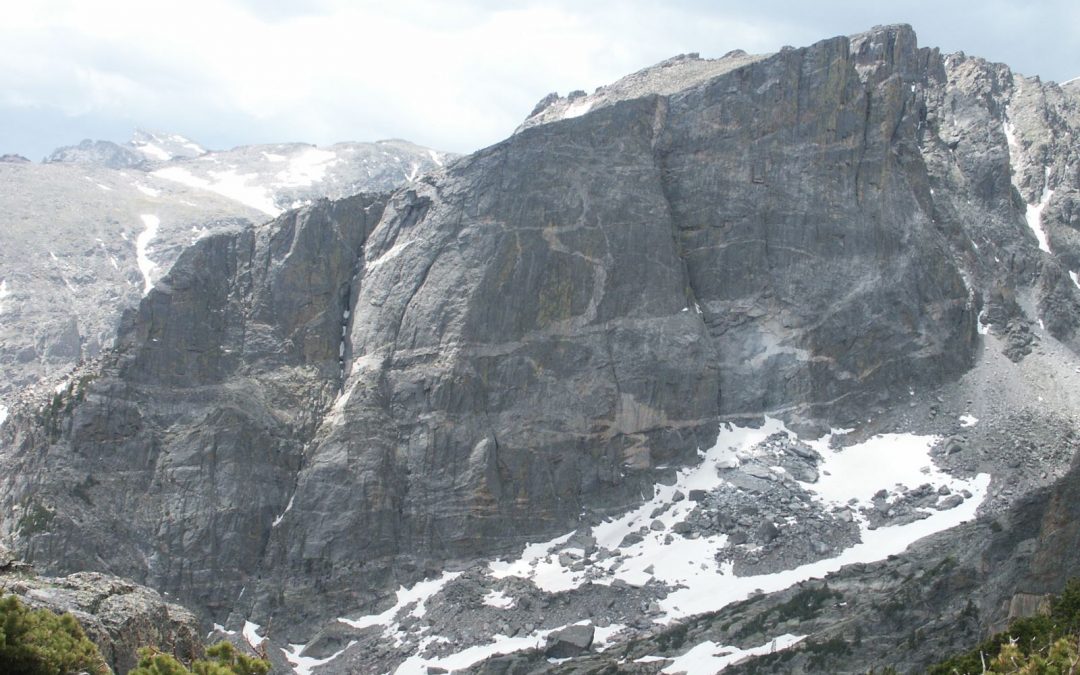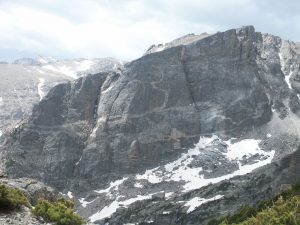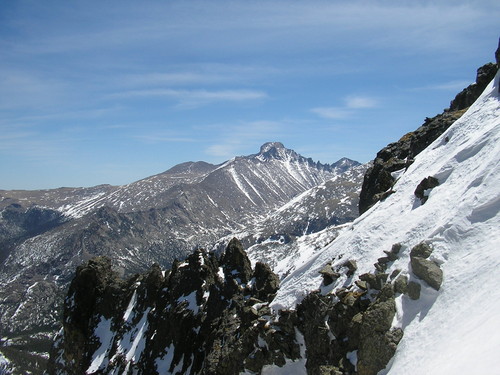
by Cory Dudley | May 15, 2017 | Bringing You Colorado, ClimbMountains, Colrorado14ers, Cory Dudley, Motivational Monday, The Winning Team Real Estate Group, ThingsToDoInColorado
Colorado is well known for it's collection of 14er mountains, which attract locals and visitors alike to meet them and conquer them, time and time again. For someone seasoned in the effort, you know how to prepare, what to pack, how to properly pace yourself.. But what about the newbies? Don't let inexperience keep you from experiencing the climb - we're here to fill you in on some of Colorado's gentler giants and help you check a couple off your bucket list this summer! FAQ's can be found at the bottom of this list.
(Keep in mind that this list was created under the assumptions that those attempting are in reasonably good shape, properly equipped for the trek and climbing during the right season..)
Mount Sherman (14,036 feet) - 5 miles - 2,100 feet elevation gain
At 5 miles, anyone who has run the Bolder/Boulder will realize that race is longer than this climb. Many old mining buildings provide curious scenery and the chance to explore if you're feeling so inclined. Tip: Beware of the wind that could pick up and pack your shell layer.

Mount Bierstadt (14,060 feet) - 7 miles - 2,700 feet elevation gain
This peak is near Idaho Springs and is perhaps the most popular for 14er virgins, so keep that in mind before choosing this trek. For many it can feel so well-stamped that it doesn't qualify as an adventure, which could leave you feeling a bit disappointed. However, the basin offers great views of the peak, and you'll get beautiful shots from the summit as well. Tip: If you're looking for more of a challenge, consider taking the Sawtooth Ridge route, but beware - it is not a beginner route! Go with someone who's experienced and familiar.
Handies Peak (14,048 feet) - 5.5 miles - 2,500 feet elevation gain
Who wouldn't want to visit the San Juan Mountains? While it is short and you'll stick to a quality trail all the way to the top, this hike pays out in visual rewards when you reach the finish. Soak in the American Basin before heading back down! Tip: The 4WD road leading up can be in poor condition at certain times of the year. Be prepared to park-and-hike-it to the trailhead if need be.

Mount Antero (14,269 feet) - 7 miles - 2,400 feet elevation gain
The majority of this climb can be a bit boring for most, but the final 500 feet are breathtaking. If you enjoy suspense and don't mind waiting for the best part, give it a go! The road is safe, so no need for extra planning on this one. Tip: Mount Antero is well known for having lots of aquamarine, so spend time digging around if you're into that.
Mount Huron (14,003 feet) - 7 miles - 3,500 feet elevation gain
Huron is a steep climb, but you'll rely on a good trail to lead you to the top. Lots of switchbacks help alleviate that burning in your legs (as well as snack breaks..) This is a fun, challenging hike that ends with some of the most awe-inspiring views of all the Colorado 14ers. Tip: Don't underestimate this mountain, even with the reasonable distance; the elevation will get you if you don't properly pace.
Mount Democrat (14,148 feet) - 4 miles - 2,100 elevation gain
Looking for a gentle and short hike? Democrat is the one for you. In fact, it is typically climbed with three other peaks, which is a popular way of checking off four peaks all in the same day. For beginners, it's nice enough to climb all on it's own. Tip: Don't pressure yourself into climbing Democrat's three sister peaks - it very well could take away from your enjoyable experience and taint the entire thing.
Quandary Peak (14,265 feet) - 7 miles - 3,500 elevation gain
Perfect for climbing before spending the evening in Breckenridge! Because it's so close to the popular ski town, this is a favorite for locals and visitors alike. You'll follow a trail all the way to the top, and get great elevation gain on the way up making for excellent views. Tip: Like Huron, Quandary is steep. Bring hiking poles to aid you on the way back down.

Grays (14,270 feet) and Torrey Peaks (14,267 feet) - 8 miles - 3,600 elevation gain
Perhaps you've seen these peaks from your drive along I-70? If it's the thrill of adventure you're seeking, tackle these two peaks at once. Take the trail from Grays over to Torreys and you'll loop back around to the same trailhead you began at! Tip: Arrive early because this area tends to become crowded quickly, and drive something that doesn't sit too low to the ground; the road up can be rough on smaller cars.
Mount Elbert (14,433 feet) - 9 miles - 4,700 elevation gain
There is absolutely NO risk of getting lost on this hike, as the trail is clearly defined and very wide. Elbert is the tallest peak in Colorado, which makes this one quite the accomplishment. From the summit, you can see dozens of 14ers... In fact, many claim that Elbert offers the best views of all. Tip: Elbert is a walk, but a very steep and long walk. Don't dismiss the physical challenge this climb will be.
Longs Peak (14,259 feet) - 14 miles - 5,100 feet elevation gain
The granddaddy of Rocky Mountain National park! There's a reason this is the last one on our list... It is certainly not the easiest for beginners. But if you climb at least 3 or 4 of the others first, you'll be in a much better position to tackle Longs Peak with a trusted group of fellow go-getters. It makes for a good first "tough" mountain for those who are still novices, too. The route is well marked and there's even a bathroom and small shelter to stop at before the most challenging portion begins. Tip: Start from the trailhead as early as 2:30 am and you'll be greeted by TONS of very visible stars, and a sunrise that will turn the rock walls a rich red.

FAQ's
1.) What should I bring when climbing 14ers?
Food that is fulfilling for you, sunscreen, a hat, gloves, sunglasses, more water than you'd think, and a windproof/rainproof jacket.
2.) What kind of shape should I be in?
In an ideal world, you'd be able to run a 5k comfortably. But there are plenty of us who simply haven't run a 5k - we wouldn't know either way! A good rule of thumb is that if you're a good weight, join in on a bike ride of two each week with friends, hit the gym regularly, you'll be able to handle all of the above. Naturally, the younger you are the easier it all will be.
3.) How should I dress for the day?
Comfortable shoes that have been broken in properly (hiking boots and trail running shoes are both good options.) Wear layers like you would on any other hike, and pack waterproof clothing in case you run into weather.
4.) When is the best time to climb them?
The season typically goes until mid-September before you'll get considerable amounts of snow on the trails and you're officially winter climbing. People tackle these climbs all throughout the year but for beginners, it's best to avoid the additional elemental adversity if you're able.
.jpg)

by Cory Dudley | Mar 15, 2016 | Bringing You Colorado, Colorado, Cory Dudley, DragonsTail, HalletPeak, LongsPeak, RMNP, Rocky Mountain National Park, Rocky Mountain National Park Series, The Winning Team Real Estate Group, ThingsToDoInColorado, Trek
One of our most popular National parks - Rocky Mountain National Park - is less than an hour away from from our office inDowntown Longmont. It offers plenty to anyone who visits, no matter the season.
That's why when we say, #BringingYouColorado or #WeAreColorado, we truly do mean it!
------------------------------------------------------------------------------------------------------------------------------------------------------------------------
We'd like to introduce you to a trek commonly referred to as:
'Dragon's Tail Couloir'
It's nestled up above the trail to Emerald Lake and consists of 1,500 feet of fairly steep climbing - but the views of Hallet Peak's North Face and Longs Peak in the distance make it all worthwhile!

(North Face of Hallet Peak)

OLYMPUS DIGITAL CAMERA
(View of Longs Peak)
What do you have planned for the weekend?
Check out the video below by Mark Nolan to get a better idea of what's in store, should you decide to make the journey....










.jpg)

